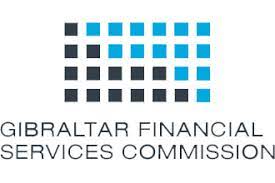What do you know about misfeasance?

Although I&L‘s clients are mostly creditors, some of our work involves supporting, defending and representing company directors accused of misfeasance, and other wrongdoings.
We advise whoever needs help. It’s not our role to determine whether someone is guilty of misfeasance, and in many instances our client has proved to be the innocent party.
Misfeasance is an abuse of power by a director, an ex-director or an insolvency practitioner (IP). The offence occurs when an officeholder misapplies, misappropriates, retains or becomes accountable for the company’s money and or property.
Usually, claims relate to dishonest or bad behaviour that has caused the company’s stakeholders to suffer a financial loss. All limited companies have stakeholders such as creditors, shareholders, employees and customers.
They assume the director(s) are managing the company and protecting their interests, but have no real way of knowing.
According to Section 212 of the Insolvency Act 1986, only creditors, shareholders and IPs may bring a misfeasance claim. IPs attempting to recover assets or their cash equivalent tend to bring the most claims.
Misfeasance is a class action
A creditor, a shareholder, or a group of them may bring a claim. But it’s important to remember misfeasance is a class action. Consequently, a claim made by a single creditor or shareholder is taken on behalf of them all.
If the claim is successful, the creditor or shareholder may have their costs paid. However, the court will distribute any awards equally.
Alternatively, a clever but out-of-pocket creditor may approach the director(s) to negotiate a third-party payment.
E.g. a creditor has leverage if they’re owed £50,000 by an insolvent company that owes creditors a total of £500,000. This influence increases greatly if they also have compelling evidence of misfeasance by the company’s director(s).
It would be wise for the creditor to make a claim for £500,000, and then say to the director(s):
“If you pay £50,000 now to reimburse my company’s loss, I’ll drop the court proceedings.”
As long as the payment comes from an independent third-party, and not the proceeds of the insolvent company, this strategy should encourage the director to pay the creditor’s £50,000 debt promptly.
Understanding the winding up petition: A crucial tool
In the world of insolvency, a winding up petition holds significant importance. When a company has received a statutory demand (SD) and fails to raise…
Read MoreUrgent Call to Action: Have You Invested in Beech Holdings (Manchester) Ltd?
If you or anyone you know has invested in Beech Holdings (Manchester) Ltd, it’s time to take action immediately and get in touch. The Situation…
Read MoreBankruptcy Annulment: A Fresh Start for Financial Recovery
Bankruptcy is often viewed as a last resort for individuals overwhelmed by debt, offering a path to financial relief but also leaving a significant mark…
Read MoreCastle Trust and Management Services Ltd- The Big Problem for the Gibraltar Financial Services Commission
The collapse of Castle Trust and Management Services Ltd (CTMS) has raised serious questions aboutthe role and effectiveness of the Gibraltar Financial Services Commission (GFSC)…
Read More



